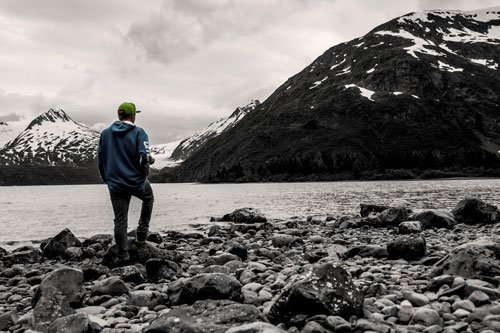15 Facts About Portage Glacier to Know Before Your Tour

This popular tour is a must-see for anyone in the Anchorage area. Why? Because you’ll get to see one of Alaska’s treasures – an Ice Age glacier that’s still active and continues to shape the Portage Valley. Here are 15 facts about Portage Glacier to know before you visit.
It’s one of the most popular places to visit in Alaska
Portage Glacier is the second-most visited Alaska attraction behind Denali National Park. There’s a reason why people flock to this site – it’s something special that you can’t see in any other state.
It used to be much bigger
The Portage Glacier used to extend over the entire 14-mile stretch of Portage Valley, a narrow stretch of land that links mainland Alaska to the Kenai Peninsula.
You can view it by water
The Portage Glacier Cruise is one of the best ways to view the glacier. Naturalists aboard the mv Ptarmigan, the only boat operating on the Portage Lake, will tell you about the glacier while you cruise within 300 yards of this frozen monolith.
The lake was created by the glacier
As the glacier began receding, Portage Lake was born.
Pieces of the glacier break off into the lake
This phenomenon is called “calving,” and it’s pretty spectacular. You might get a chance to see one of these giant bergs cracking and breaking free, crashing into the water below, making a dramatic splash. It’s a great photo op.
It’s always changing
Climate makes the glacier fluctuate. It’s been in retreat since the early 1900s (hence, the calving) and is now relatively stable, but scientists think it’s possible the glacier could advance in the future.
You can see the glacier on foot
Take the Portage Pass Trail, a two-mile, easy- to medium-level difficulty hike that’s appropriate for all ages. You’ll see views of Passage Canal, beautiful mountains and Portage Glacier.
See Alaska mammals
On your hike, you also might get to see mountain goats, beaver, black bear and moose.
It’s a birder’s delight
During the summer, the valley is a prime viewing spot for songbirds. Spring and fall migrations bring visitors such as cranes, swans and ducks. Bring your checklist.
You can get more info at a visitor center
Stop at the Begich, Boggs Visitor Center to learn about the best places to view wildlife, to take a guided nature walk, and to get updates about avalanche danger and whether bears are active in the area.
Get to know Alaska’s plants and trees
The Portage Glacier Valley features a range of habitats, including temperate rainforest and avalanche paths, which allow a variety of plants to blossom and thrive.
The legendary ice worm is here
You’ll hear whispers about Alaska’s ice worm as if it’s a mythological creature. But the ice worm is real. And weird. They look like tiny earthworms, surviving on pollen and algae in the glacier. They thrive in freezing temperatures. In fact, they need the cold – they melt and die when temperatures reach more than 40 degrees Fahrenheit. Your best chance of finding them is on the Byron Glacier Trail just after sunset.
The glacier carved an old-time superhighway
Portage Pass was traversed by Alaska Natives, prospectors, and early settlers as a way to get between Turnagain Arm and Prince William Sound.
You can stay near the glacier
About 50 campsites are available near the visitor center.
It’s easily accessible.
If you’re staying in Anchorage, the glacier is a short drive (about an hour) along the beautiful Seward Highway in the Chugach National Forest. A perfect day trip.
Now that you know some of the key facts about Portage Glacier, you’ll be ready to visit – and then try some other Anchorage-area day trips when you’re done.
Back to Blog